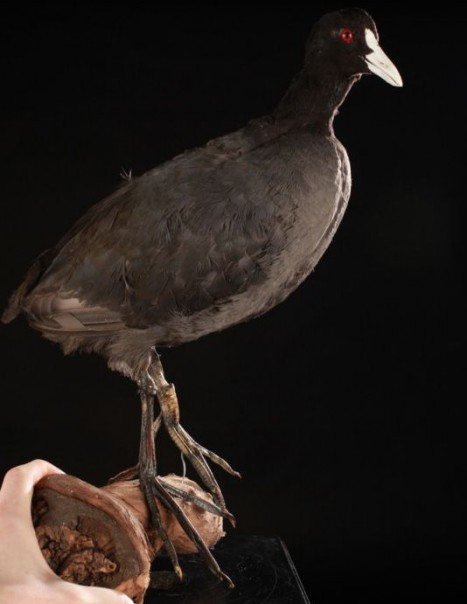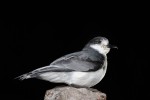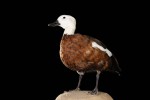Eurasian Coot – Fulica atra
Both adults are similar in plumage, but the female is slightly smaller than the male. Its plumage is black, but we see a contrast between the deep black of the head and neck, and lighter body, rather greyish-black the brightness.
The secondary flight feathers have white tips. The underside is gray. The beak is pinkish-white. The eyes are a deep red. The legs are greenish yellow
In breeding plumage, the male has the widest front plate than the female. The chick is black with yellow duvets scattered around the head. The cap is reddish and naked. The beak and the tiny front panel are red. Young have brown-black body. The species frequents slow vast bodies of water and prefers shallow water.
The secondary flight feathers have white tips. The underside is gray. The beak is pinkish-white. The eyes are a deep red. The legs are greenish yellow
In breeding plumage, the male has the widest front plate than the female. The chick is black with yellow duvets scattered around the head. The cap is reddish and naked. The beak and the tiny front panel are red. Young have brown-black body. The species frequents slow vast bodies of water and prefers shallow water.
Very common on lakes, ponds and rivers, reservoirs, gravel pits, canals, in the creeks, open marshes, but close to deeper areas to feed. It prefers muddy bottoms with emergent vegetation, submerged or floating, it often breeds in seasonal wetlands or temporary pools.
It needs some wetlands discoveries, but it breeds in general near the shore or floating or emergent vegetation. It lives in the lowlands, but it can be found up to 1000 meters above sea level in Europe, and more, from 2000 to 2500 meters, depending on the distribution. In New Guinea, it is visible up to 3500 meters above sea level and lies on the mountain lakes is also found in Europe, Asia, Australia and Africa, and more recently in New Zealand.
It needs some wetlands discoveries, but it breeds in general near the shore or floating or emergent vegetation. It lives in the lowlands, but it can be found up to 1000 meters above sea level in Europe, and more, from 2000 to 2500 meters, depending on the distribution. In New Guinea, it is visible up to 3500 meters above sea level and lies on the mountain lakes is also found in Europe, Asia, Australia and Africa, and more recently in New Zealand.
The increase cries usually marks the beginning of the breeding season, with the establishment of the territory and reproduction-related activities. At this point, you can hear louder cries. Courtship displays are limited in the Rallidae family. The parades are often simple, with a bird in a submissive position while the other smooth its feathers, and erect posture with arched neck and head down. Then the male chooses the nest site, but both partners can choose together.The nest is large, made of dry and green stems, leaves and twigs, bark, roots and reeds. Usually, the nest is raised in case the water level rises. Both sexes participate in the building but the platform that serves the whole family is made by the male.
The female lays 6 to 10 eggs a day or two apart. Incubation lasts between 21 and 26 days, by both parents. The chicks are precocial but they are hatched in the nest the first 4 days. They are first fed beak to beak by adults. The young of the previous brood can also assist in feeding the chicks next brood.
Young people are able to dive after 3 to 5 weeks after birth and can feed themselves in a month, but parents provide them with food for another two months until their complete independence from 6 to 8 weeks. They are feathered at 2 months and can fly at the age of 8 to 11 weeks. This species may produce two broods per season.
Currently, coot is not threatened.





